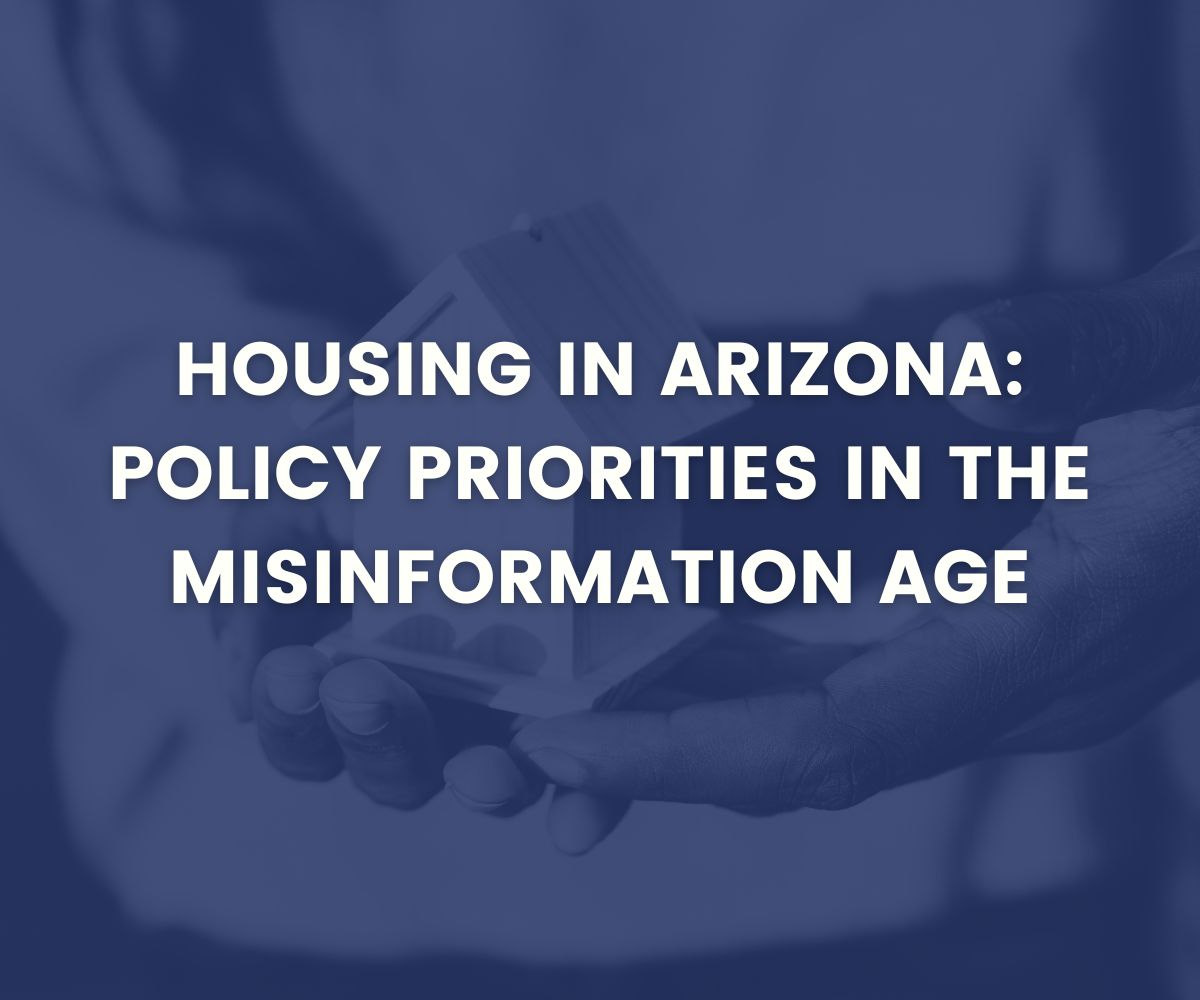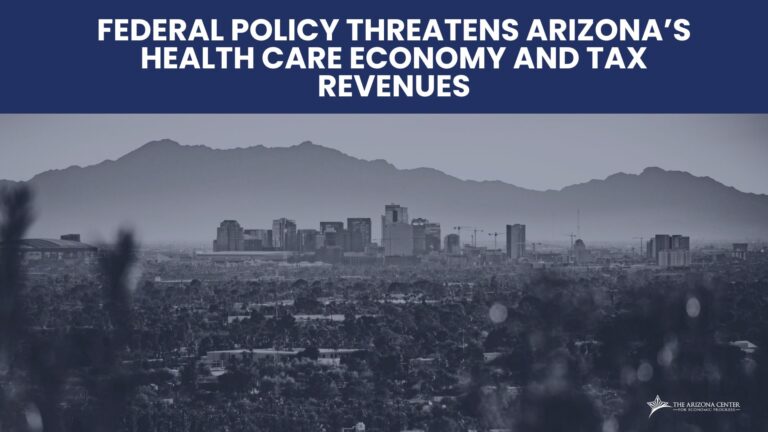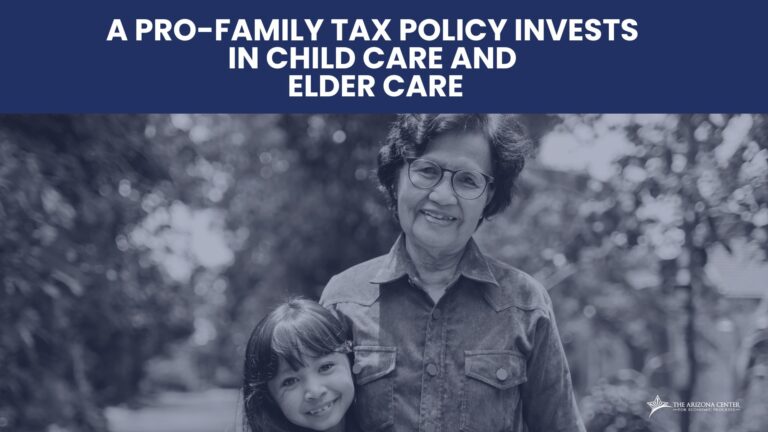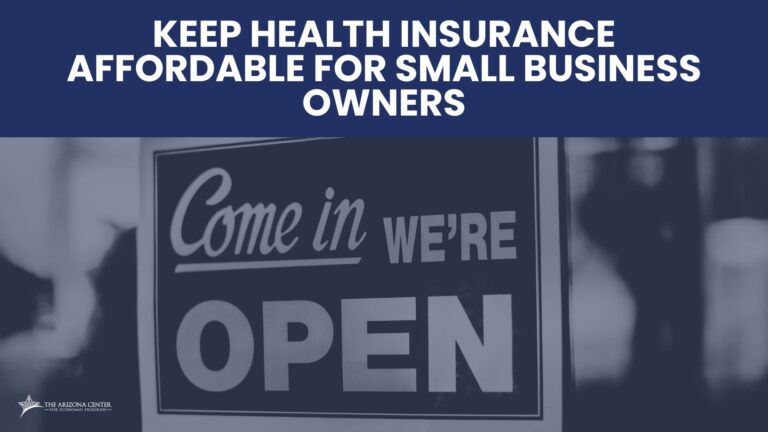
Housing in Arizona: Policy Priorities in the Misinformation Age
Population and Homelessness
Homelessness in Arizona has increased substantially since the 2020 pandemic. Estimates come from annual Point in Time (PIT) counts, local counts of temporarily sheltered or unsheltered individuals conducted on a single night. PIT counts are the national standard for regional Continuum of Care (CoC) programs. While likely undercounted given its methodology, PIT counts still give a rough approximation of homelessness experienced across the state.
Prior to the COVID pandemic, homelessness in Arizona peaked during the Great Recession, with over 14,000 temporarily sheltered and unsheltered individuals counted in 2009. Over the following decade, as the state’s economy recovered, homelessness continued to decrease before hitting a recorded low of about 9,000 individuals in 2017. Although homelessness increased in both 2018 and 2019, massive upticks only began immediately following the pandemic and resulting recession in 2020. Since then, the 2023 PIT count again captured over 14,000 individuals experiencing homelessness across Arizona. Despite continuous overall population growth, current levels of homelessness still roughly reflect that during the height of the Great Recession.
As Arizona’s overall population experienced substantial growth from 2009 to 2017, housing production quickly began to fall behind. Arizona’s rental vacancy rate decreased from 17.7% to 7.5% during this time, representative of an increasingly tight rental market. Still, homelessness experienced substantial decreases across the state up until 2018. Due to a combination of continuous population increases, a lagging housing market, and an unprecedented pandemic recession, homelessness unsurprisingly increased tremendously beginning in 2020.
Permanent supportive housing (PSH) is defined as "permanent housing in which housing assistance (e.g., long-term leasing or rental assistance) and supportive services are provided to assist households with at least one member (adult or child) with a disability." These are housed individuals and families.
Including PSH units with PIT counts misrepresents homelessness experienced across the state.
Unless PSH should be discontinued, families and individuals receiving services are not at imminent risk of homelessness and are therefore not categorically homeless. By providing additional context and accounting separately for PSH units and PIT count estimates, a much different picture of experienced homelessness and spending in Arizona is shown.
Temporary Shelter and Permanent Supportive Housing
Continuous increases in PSH units reflects a growing need met by providers to keep more families and individuals off the streets. By separately accounting for sheltered and unsheltered populations, PSH units, and shelter beds since 2007, findings suggest that a combination of temporary and permanent housing services worked to decrease overall homelessness up until 2017. Thereafter, a combination of external housing factors and an unforeseen pandemic created drastic spikes in unsheltered homelessness for which providers were unprepared.
As Arizona emerged from the Great Recession, temporary shelter beds and those sheltered remained stable as unsheltered homelessness continued to decline. During this time, an increasing number of individuals were captured by permanent supportive housing services. Around 2014, shelter bed availability began to decrease as the need for permanent supportive housing continued to grow. Given decreasing trends in homelessness, increasing housing externalities, and stagnant funding for providers, this shift probably made sense at the time.
Overall, homelessness continued to decline until 2017, where individuals receiving PSH nearly outnumbered those temporarily sheltered or unsheltered. This arguably was permanent supportive housing working as intended. Families and individuals who would otherwise be homeless were being captured by PSH services and kept off the streets. Unfortunately, as external housing factors caught up in lieu of an unforeseen pandemic, providers faced inevitably immense difficulties keeping up with rapidly increasing homelessness. Resultingly, this created a much larger share of unsheltered individuals than during the Great Recession.
Efforts in response to heightened unsheltered homelessness are evidently being made, given recent increases in temporary shelter inventories. Still, PSH units are undeniably in high demand. Funds are adequately being used to provide long-term leasing or rental assistance services to those with disabilities who would otherwise be literally homeless or at imminent risk of homelessness.
Spending on Homelessness
Others have argued that despite current spending, homelessness continues to increase, notably by only providing spending data for the most recent years. Examining greater trends since 2007, federal and state spending is less today than during the Great Recession. Furthermore, findings suggest that funding for affordable housing development decreased in the decade prior to the 2020 pandemic, while that for temporary shelter services only slightly fluctuated.
HUD Grants
Federal HUD grants are a major source of financing for states, local governments, and nonprofits to support homelessness programs and services in addition to developing affordable housing. Comparing annual HUD grants awards in Arizona since 2007, funding is unsurprisingly greatest during times of housing crisis and heightened homelessness.
Since the Great Recession, the largest sum of federal funds provided to Arizona was through the Neighborhood Stabilization Program (NSP). From 2009 to 2011, the federal government aided in purchasing, redeveloping, and selling foreclosed homes with provided housing assistance. This assistance came in addition to regular Community Development Block Grants (CDBG) and HOME Investment Partnerships Program (HOME) grant funding. While both CDBG and HOME programs are intended to encourage low-income and affordable housing development for localities, CDBG funds can also be used to address homelessness. Continuum of Care (CoC) and Emergency Solutions Grants (ESG), meanwhile, are programs primarily dedicated to homelessness shelters and services. Following the expiration of NSP funding in 2011, CDBG, HOME, CoC, and ESG programs experienced stable funding until the 2020 pandemic.
Following the NSP’s expiration in 2011, CoC and ESG funding experienced moderate increases in the decade leading to 2020. Meanwhile, CDBG and HOME programs dedicated primarily towards affordable housing experienced substantial decreases. Note that permanent supportive housing falls under CoC. As Arizona’s rental vacancy rates declined, less available funds for affordable housing development through CDBG and HOME programs possibly pushed more homes into PSH services. Given steady funds for CoC programs, providers now carrying the burden for housing stability likely had to do so by decreasing shelter space capacity.
Arizona Housing Trust Fund
The state plays a large role in financing homeless shelters and support services within Arizona through its Housing Trust Fund (HTF). The HTF provides the Arizona Department of Housing (ADOH) with its most flexible source of funding from deposits by unclaimed property collections. Through the HTF, the Department provides housing assistance programs where no federal resources exist, including funding for homeless shelters, transitional housing, eviction prevention, rapid rehousing, and other innovative activities.
Arizona’s HTF year-end balances and expenditures from fiscal years 2007 to 2023 follows a familiar pattern of decreased spending post-Great Recession. Heightened spending to combat homelessness from 2007 to 2009 quickly depleted much of the fund, with expenditures slightly greater than the year-end balance for the 2009 fiscal year. In response, allocated and non-allocated expenditures were cut by more than half in fiscal year 2010.
HTF expenditures remained stagnant from fiscal years 2010 to 2019, with slight year-to-year cuts allowing year-end balances to grow. In an ever-tightening housing market, however, this choice likely impeded one of the HTF’s primary functions, affordable housing development. Continuous cuts to the HTF potentially exacerbated the housing shortage crisis by limiting the state’s ability to develop. Accounting for these shortcomings, the HTF has received significant deposits in recent fiscal years. A historic $150 million was deposited into the Housing Trust Fund in fiscal year 2024, with $15 million committed to develop affordable workforce housing.
From fiscal years 2006 to 2009, over $160 million of the HTF was dedicated to expenditures, with more than a third servicing those already housed. For fiscal years 2018 to 2023, only $116 million of the HTF was dedicated, with the vast majority towards affordable housing development. Still, dedicated expenditures towards homeless shelters and supportive services are greater for FY 2018-2023 despite less funding overall. Compared to the pre-recession period, greater funding was dedicated to homeownership assistance, administration, and other costs during the Great Recession.
Keeping families and individuals within their homes was emphasized in both periods, although different priorities are seen based on the existing housing crisis. In the Great Recession’s foreclosure crisis, more HTF funds were dedicated towards assisting homeowners and first-time home buyers. In today’s housing shortage and affordability crisis, greater spending is seen towards affordable housing development and eviction prevention. Keeping residents in their homes was evidently a priority of the state back then as it is now.
While funds are still being committed today towards developing temporary shelters and transitional units, less is being reserved for operating them. Given overall less annual expenditure commitments, HTF allocations for fiscal years 2018 to 2023 was likely limited between keeping people in their homes and helping those already priced out. This, in combination with decade-long declines in state revenue, paints a much different picture than rampant, out-of-control spending. Rather, this is a continued pattern of disinvestment in affordable housing exacerbating a homelessness crisis, and Arizona is strapped for cash to address.
Nonprofit Organizations
Along with federal, state, and local governments, nonprofit and charity organizations play a large role in combating homelessness in Arizona.
Homeless services and temporary shelter organization expenditures were overall lowest in 2010 at about $68 million and highest in 2021 at $107 million. Average spending per organization was lowest in 2008 at $1.8 million and again highest in 2021 at $2.8 million. For all other housing and shelter organizations, overall expenditures were also lowest in 2010 at around $343 million and highest in 2014 at $503 million. Per organization, average spending was lowest in 2016 at nearly $1.7 million and highest in 2014 at $2.5 million. For organizations of both types, per organization spending remained between $1.5 million and $2.8 million each year.
Generally, nonprofit expenditures were lowest following the Great Recession, with steady increases throughout the mid-2010s. Preceding the 2020 pandemic, overall expenditures decreased as temporary shelter and homeless service nonprofits began to take a larger share of spending. This share was its lowest in 2014 at 13.5% and its highest only a year later at 21.8%. In 2020, all housing nonprofit expenditures increased by nearly $100 million while the number of organizations decreased.
In the decade following the Great Recession, increases in nonprofit expenditures reflected decreases in federal HUD grants and Arizona’s Housing Trust Fund, suggesting that nonprofit organizations were left to fill gaps in service. While federal pandemic relief has helped keep these organizations afloat, shelters continue to express shortages as funding expires.
Final Thoughts and Takeaways
Communities across Arizona are grappling with heightened homelessness caused by severe housing shortages, burdening rents, and increasing evictions. Since the 2020 pandemic, state and local providers have experienced significant funding and expenditure increases in response. Still, financial assistance has yet to reach that of the Great Recession with similar levels of homelessness caused by the 2007 foreclosure crisis.
Findings from greater trends in housing, homelessness, and expenditures since 2007 suggest that decreased funding for affordable housing programs and a lagging housing market coincided with an increased need for permanent supportive housing services. With homelessness decreases resulting from Great Recession recovery, funding for temporary housing and shelter services stagnated as demand for permanent housing continued to grow. Given limited funds and an increasingly tight rental market, providers made hard decisions to keep individuals in their homes when possible.
In 2017, the number of individuals experiencing homelessness nearly equaled those receiving permanent supportive housing services. Had affordable housing and homelessness response funding not been decreased in the decade following the Great Recession, it’s possible that individuals experiencing homelessness would have eventually received necessary shelter and housing services. The recession, housing crisis, and increased homelessness of the 2020s strongly reflect that of two decades ago. Then as now, the federal and state government spent massive amounts to address each crisis and house those who fell behind.
Increasing legislation criminalizing homelessness through punitive bans on camping and panhandling is not only harmful to the most vulnerable, but extremely counterproductive. Cities must now prove they are enforcing these measures, or they will lose additional resources from property tax refunds by corporate landlords. Rather than taking lessons from the past, policy today is taking the wrong step by ending homelessness by punishing and not housing our people.



